Founding designer at a YC backed startup
Product design
Product management
Growth strategy
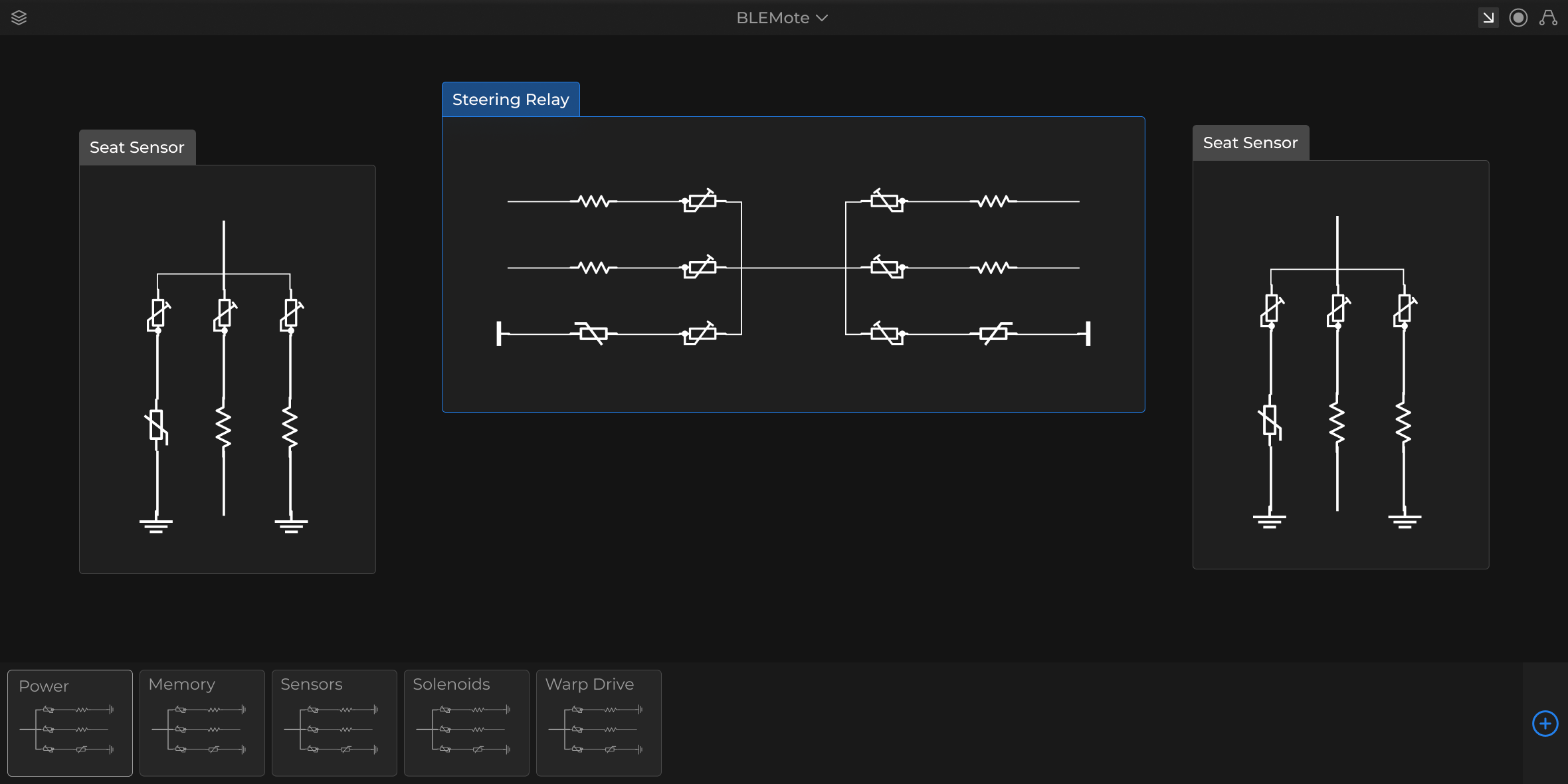
My Role
Founding product designer - User experience and interface design, some front-end dev, some product management.
Team
Duncan Haldane - CEO and effectively PM
Brad Beesley - UI Designer
Ariel Hirschberg - Full Stack SWE
Jaskirat Mahal - Front End SWE
Bhusan Gupta - Electrical engineer
Carl Allendorph - Electrical Engineer
Overview
Imagine designing a human body cell by cell. Dragging out each cell and connecting it manually, 36 trillion times. Can’t imagine that? Good. Because it’s not possible.
Complex systems have to be designed using abstraction of complexity, reusability, modularity, & automatic error checking.
JITX lets electrical engineers design complex circuit boards using code. We reduce preventable errors, manage complexity, and facilitate programmatic design.
Retention
Activation
Acquisition
THE PROBLEM
Driving retention at a zero to one startup
How might we retain customers by creating a powerful and radically different workflow that still feels comfortable and familiar?
Most electrical engineers aren’t programmers
Many of them get through their education having taken only one programming class, typically in a low level language like C. JITX is about software-defined electronics: We formally define and automate the design process using code. Our biggest challenge in retaining customers was creating a core workflow that was acceptably easy to learn, maximally automated, and sufficiently familiar to users.
HIGHLIGHTS
From fugue state to flow state
Replacing impossibly arcane legacy tools with powerful, usable software-defined electronics.
Board view - Our users derive understanding, comfort, and familiarity from seeing and interacting with their board.
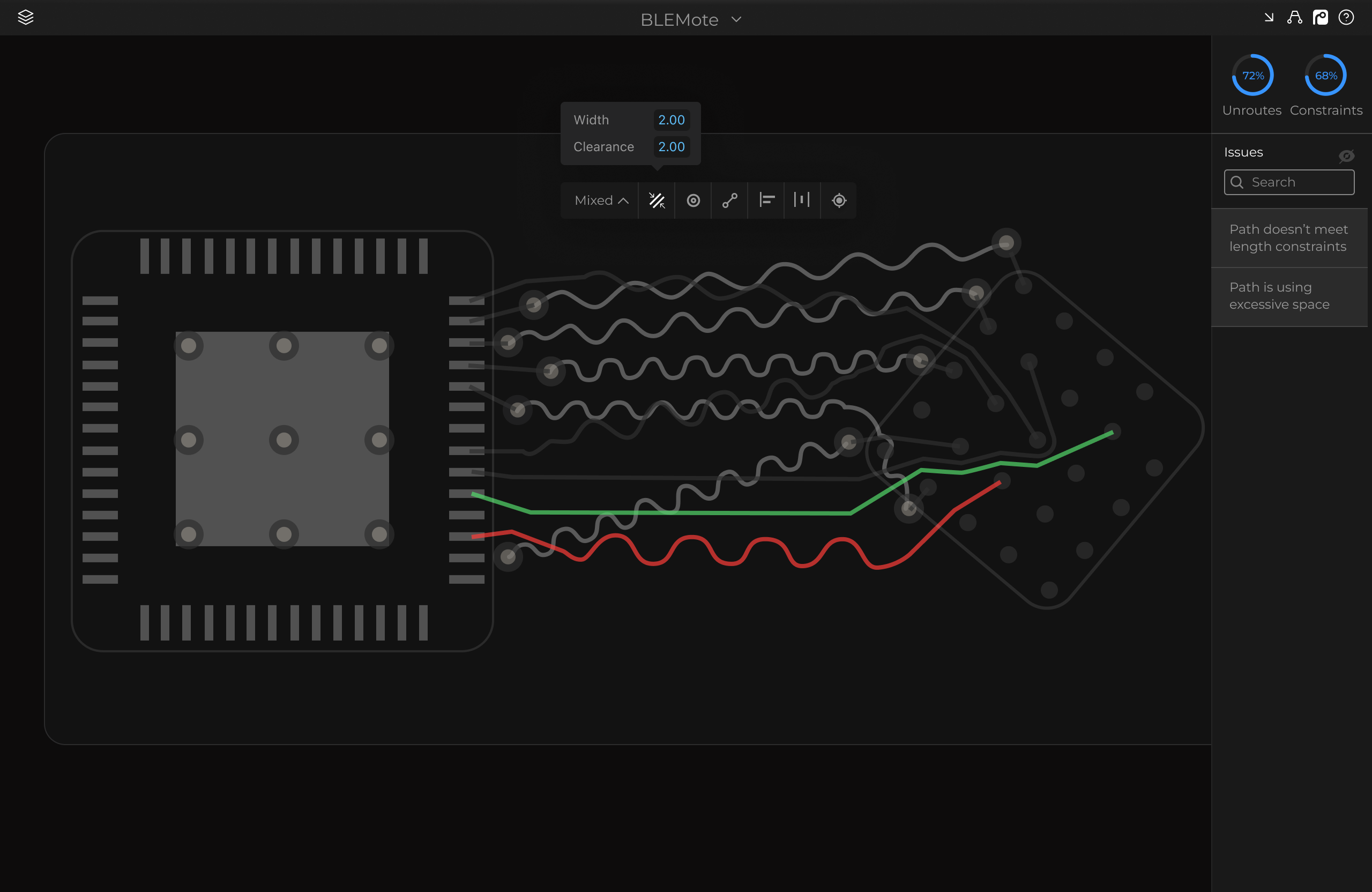
Schematic view - The schematic is a crucial vector of collaboration and shared understanding.
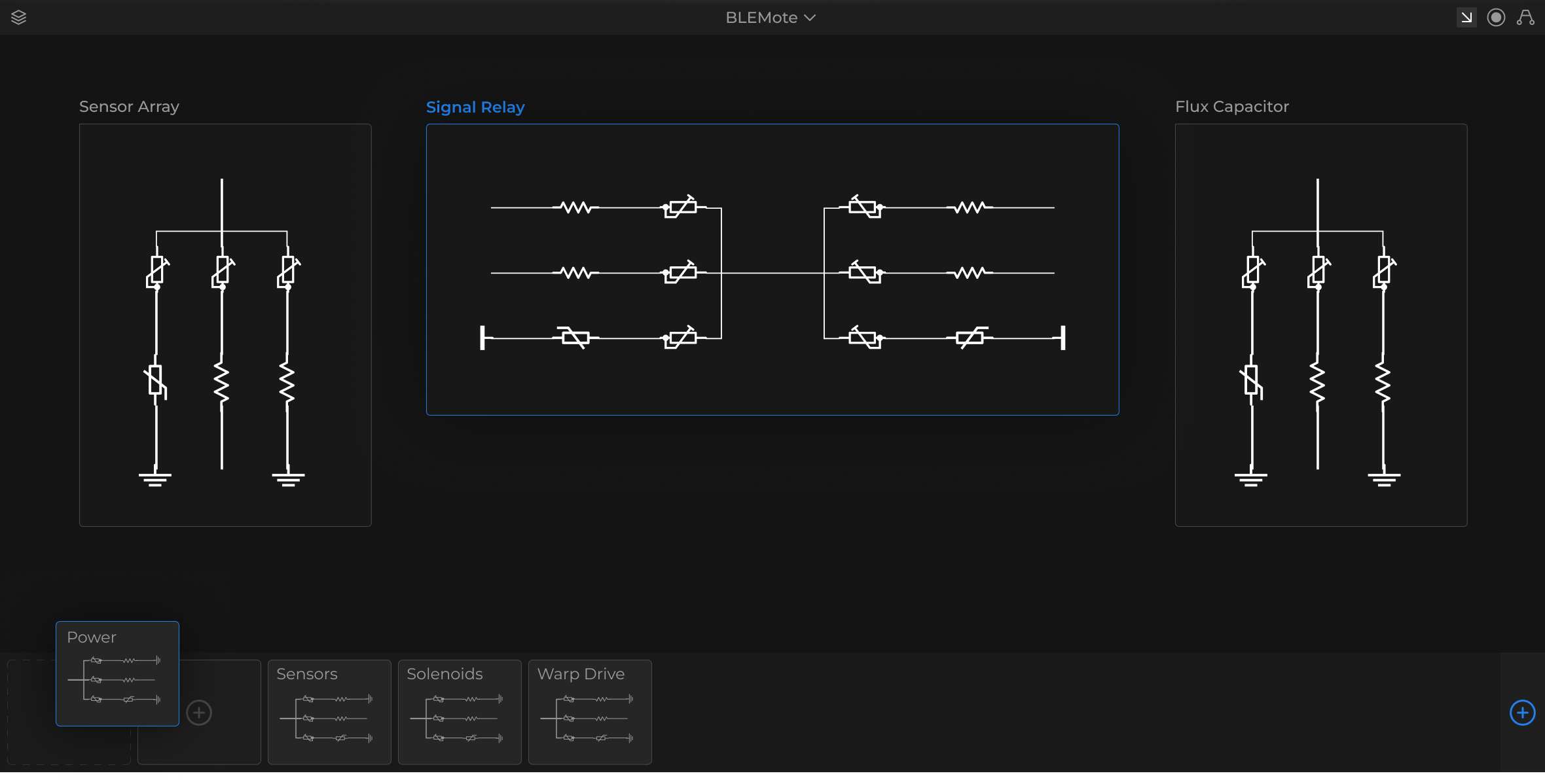
RESEARCH
Helping users exit a bad relationship
Key Questions
- What is the mental model of an electrical engineer as they design a complex system?
- What are they trying to accomplish in each phase of their design process?
- How is their progress judged and rewarded?
- Who do they work with and how do they interface with them?
- What do they like about their current tools?
- What do they hate about their current tools?
- How can I gain first-hand, experiential knowledge of their pain points?
Research Overview
- The current state of electrical engineering is broken. CAD tools are essentially drawing tools with minimal intelligence and reusability. There is an immense amount of low-value manual work involved with producing or respinning circuit boards. And the potential for error is incredibly high.
Companies will use extremely old technology because they’re afraid of making any changes to it, lest their “improvements” create some bug that grinds their entire product roadmap to a halt. Double digit percentages of circuit boards are discarded each year by the most advanced tech companies due to preventable errors.
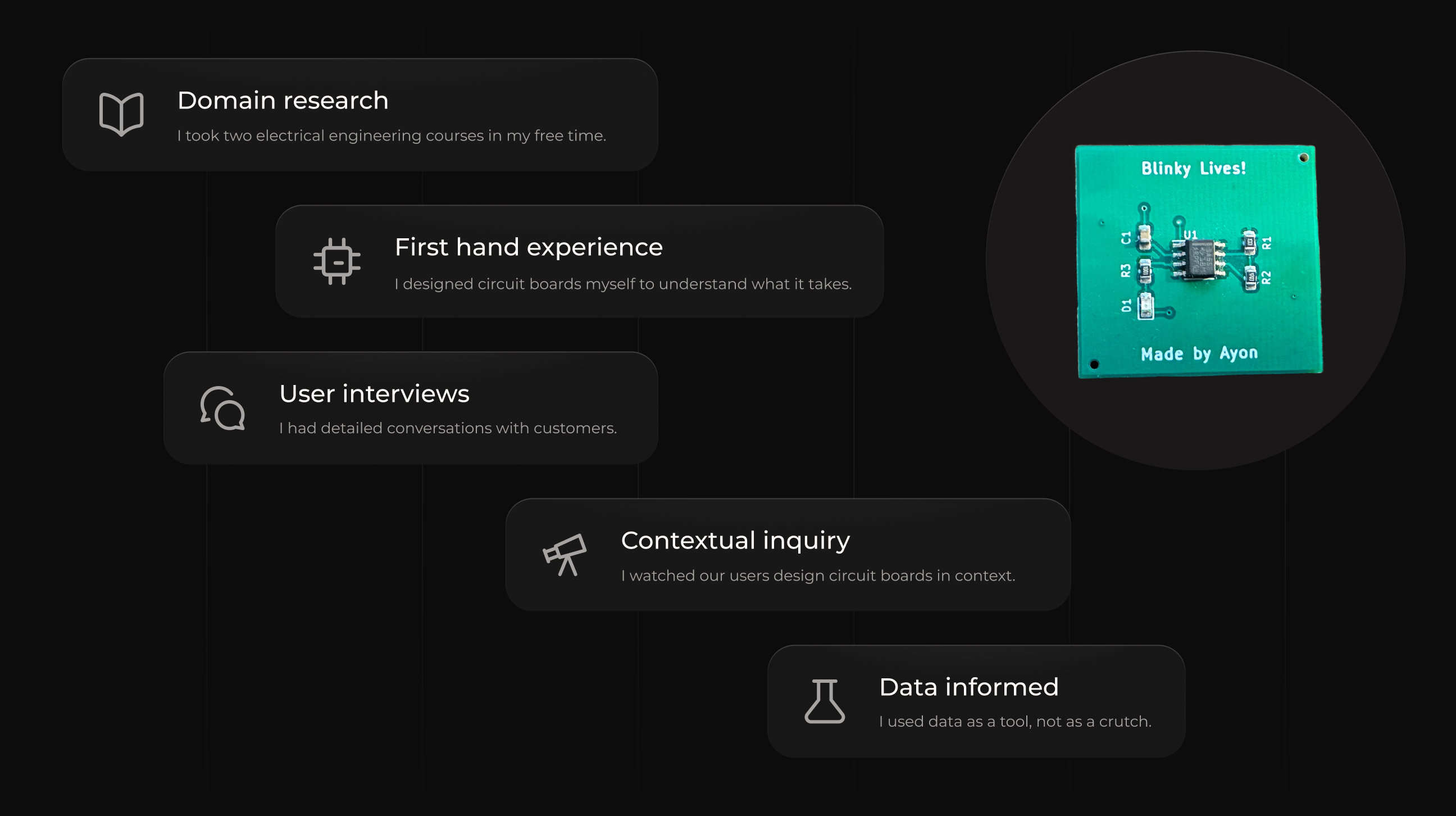
KEY INSIGHTS
Bicycles for the mind
Design for the frictionless expression of engineering ideas
Interact to understand
Some things are way easier to intuit when you can touch them
Warm starts only
Provide lego blocks and let them start building fast
Weekly active engineers
Optimize for weekly productivity
IDEATION
Creative friction produces great products
Working closely across disciplines is key
Our ideation process often involved cross-functional brainstorming on carefully chosen how might we statements. We would use FigJam or actual post its to throw ideas up, discuss, and vote on them. We would then begin iterating on our most promising ideas and test them ourselves and with our customers.
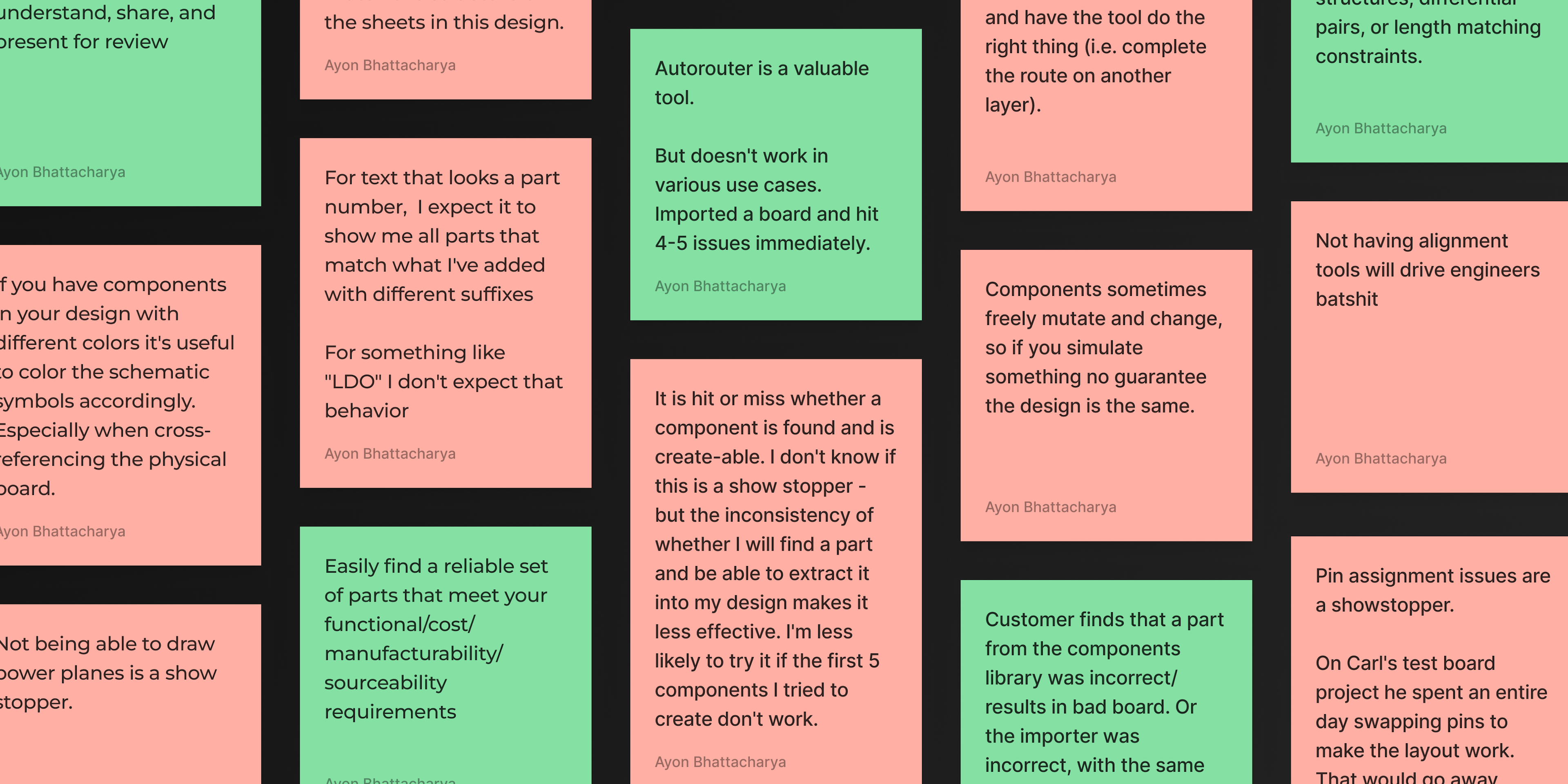
Iterating on board view - We explored various ways of helping our users understand and solve physical design problems.
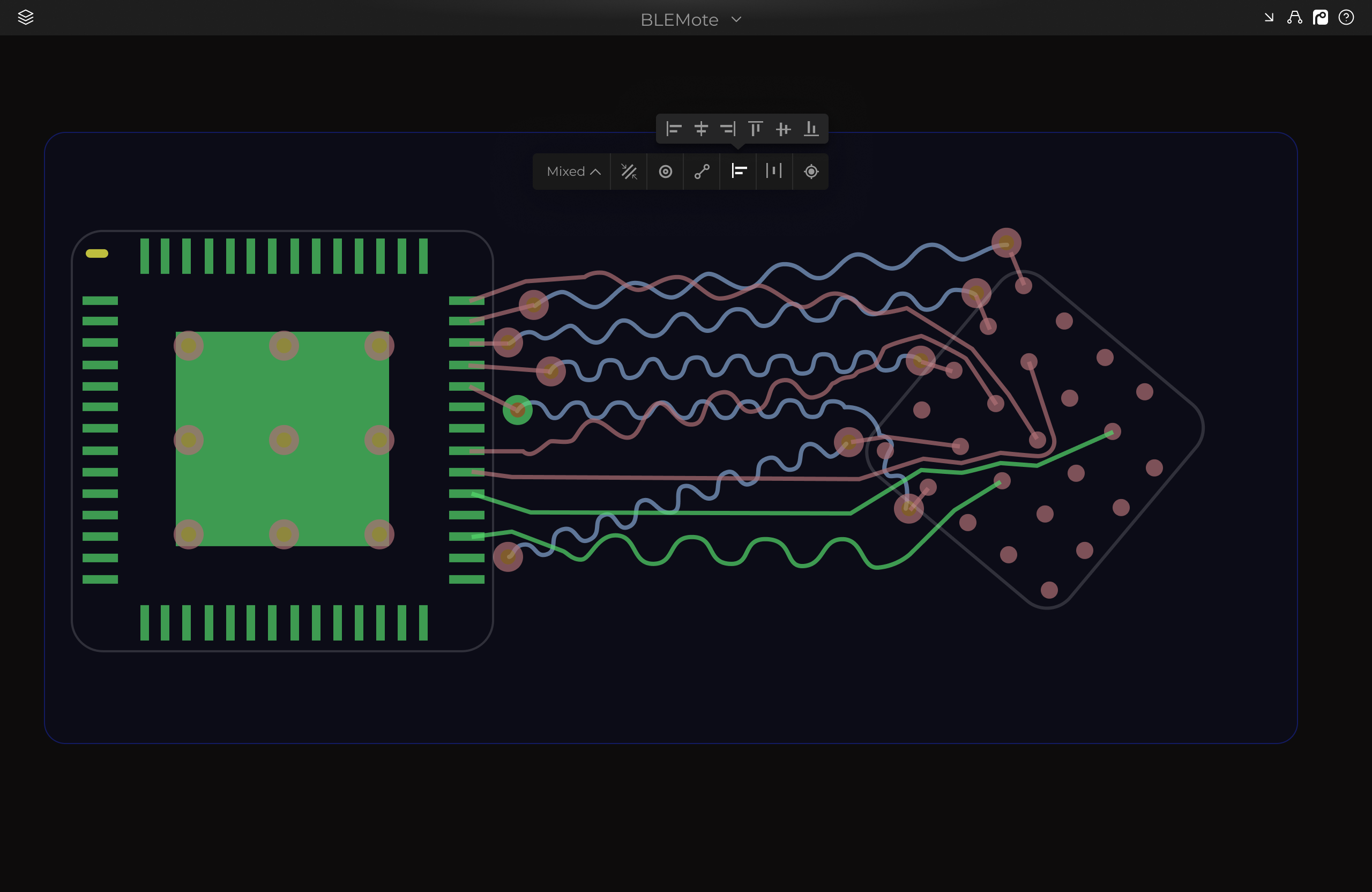
Iterating on schematic view - We tested different ideas to see what would help our users best communicate their designs.

FINAL DESIGN
Automation balanced with control
Finding comfort in radical change
In both our schematic and board view we attempted to maximize automation while keeping our users’ hands on the steering wheel. We found that being able to manually dial in the final 5% of details is a crucial driver of comfort for our customers.
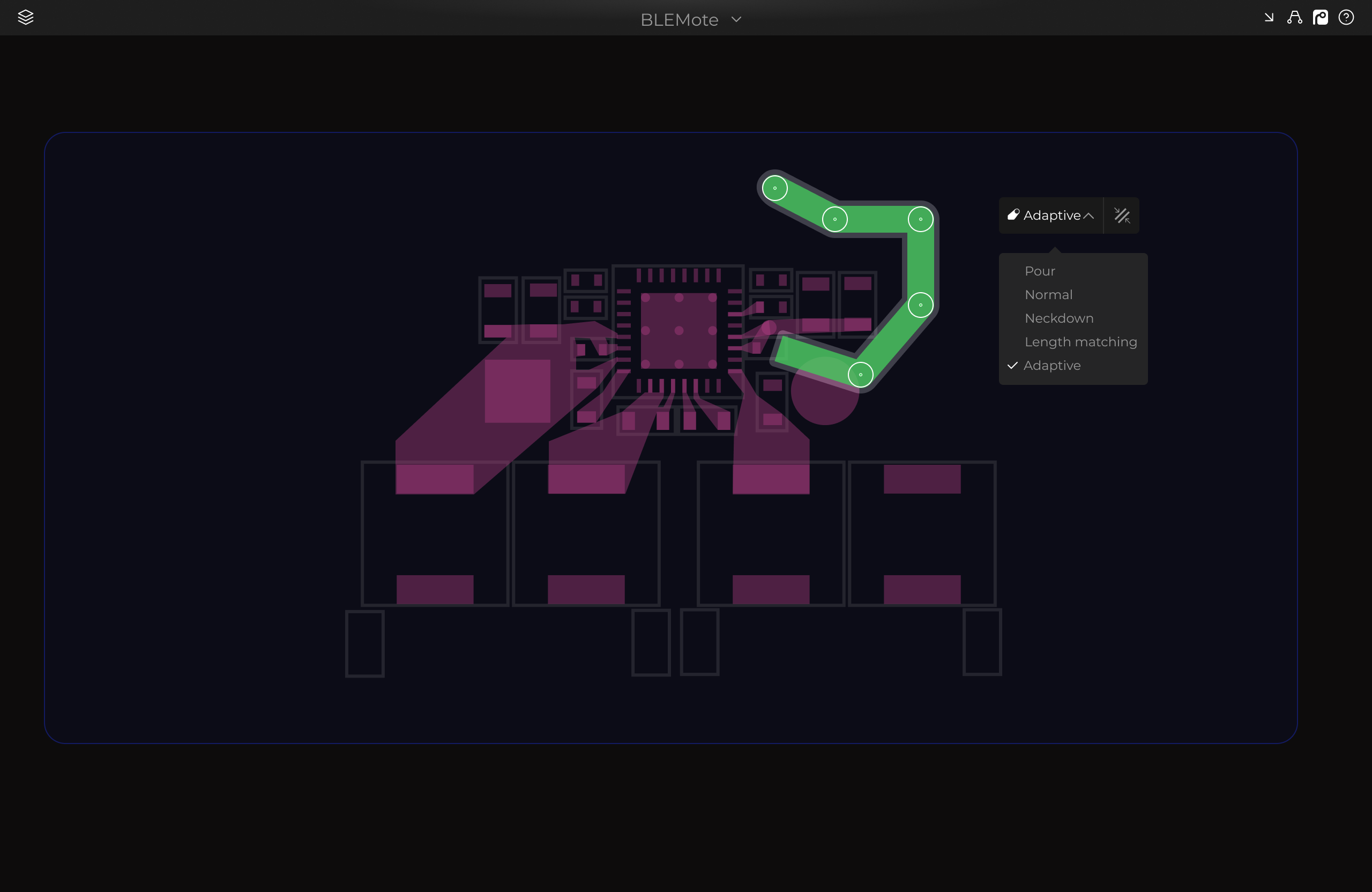


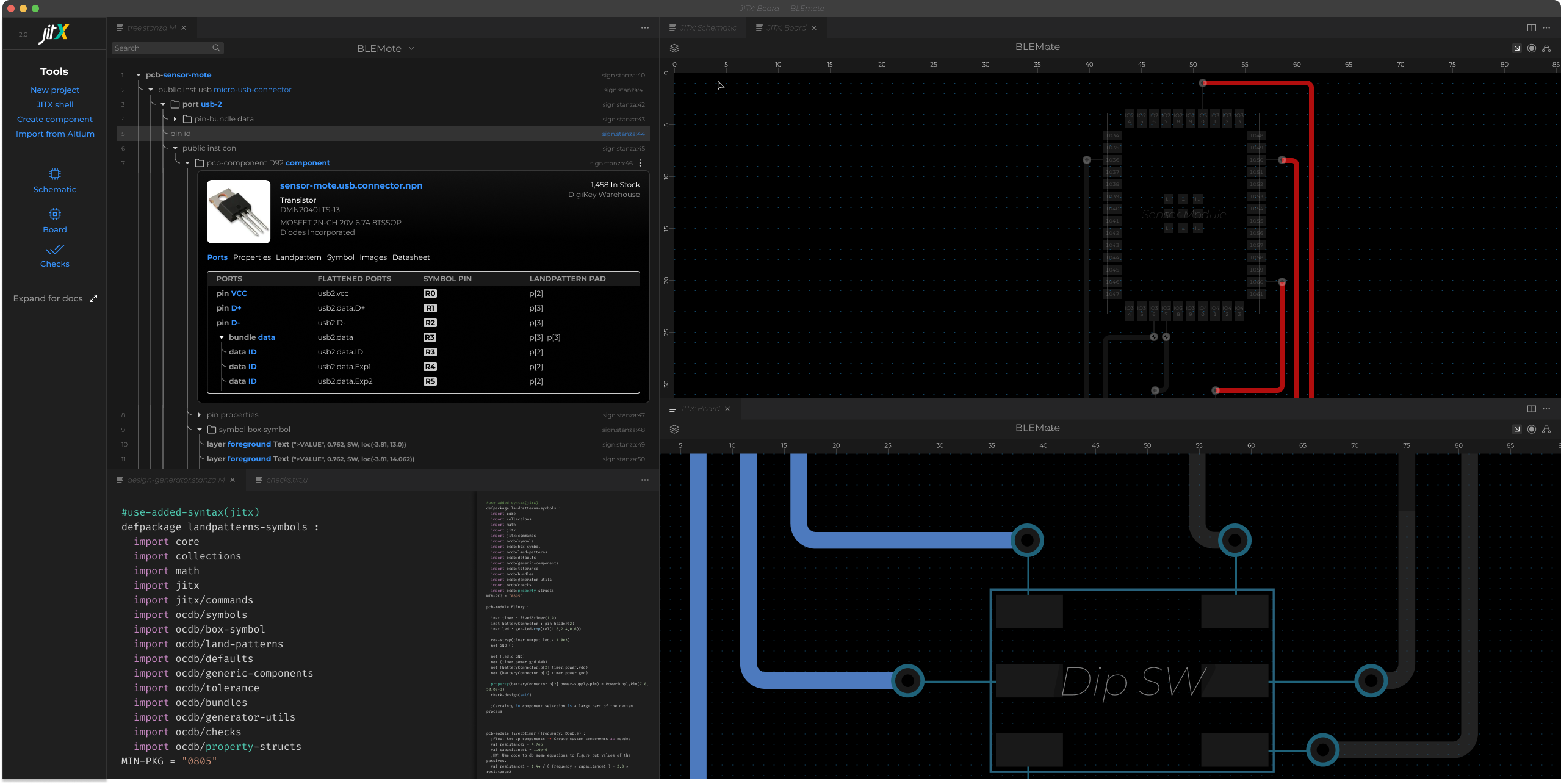
STYLE GUIDE
Advanced, trustworthy, and fast
Creating a powerful visual language
The visual language of JITX was understated and subtle with details intended to evoke a feeling of technical sophistication, trust, and speed. The best way to do that is to apply subtlety and get out of the way of users so they can use the tool in a powerful and sophisticated way.

REFLECTIONS
Things I could have done better
Quantity has a quality all of its own
Were I to do this project all over, I would have done even more low-fidelity exploration early on to push the boundaries of what is possible. We did significant iteration and exploration, but I think magic happens when you dig a bit deeper and create some additional concepts when you feel like you've got no good ideas. I would also have tried to delegate earlier and more often in order to elicit even more magic from our design team.